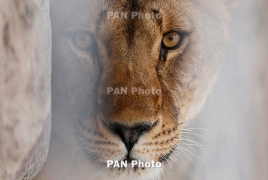
Matthew Borths discovered a giant prehistoric lion on his lunch break, CNet reports.
While examining drawers at the Nairobi National Museum in Kenya, Borths, a carnivore paleontologist, opened a drawer of Ice Age specimens and noticed a row of huge teeth staring back at him. He immediately realized the gigantic jaw was not an Ice Age specimen at all. A few years earlier, Nancy Stevens, a paleontologist at Ohio University, had opened the same drawer and noticed the same set of teeth.
The fossils, which date back 22 million years, were originally unearthed when Kenyan researchers were scouring the African plains looking for ancient ape bones decades ago. They'd been hidden away in the wrong museum drawer for years. When Borth and Stevens came along, the duo quickly realized they had found a new species of prehistoric lion. The team were able to examine portions of the creature's skull, its jaw and parts of its skeleton and discovered it is the oldest specimen of a group of mammals known as hyaenodonts.
The new carnivore has been dubbed Simbakubwa kutoaafrika, which is Swahili for "big lion from Africa". It is described in a study published in the Journal of Vertebrate Paleontology on April 18, which suggests the beast was bigger than a polar bear and had canine teeth as big as an adult foot.
The researchers believe that Simbakubwa was one of the apex predators of its era and although it is part of the hyaenodont group, it is unrelated to modern-day hyenas.
"From its teeth, we can tell Simbakubwa was a hypercarnivore, which means its diet was over 70% meat," says Borths. "Simbakubwa barely has any grinding surfaces on its teeth, so it wouldn't have processed food that wasn't meat very efficiently."
Their analysis suggests that these giant carnivores originated in Africa around 30 million years ago, moving further north over time, as the continents of Africa and Eurasia collided. At the same time, the ancient relatives of modern day cats, hyenas and dogs began to filter south.

